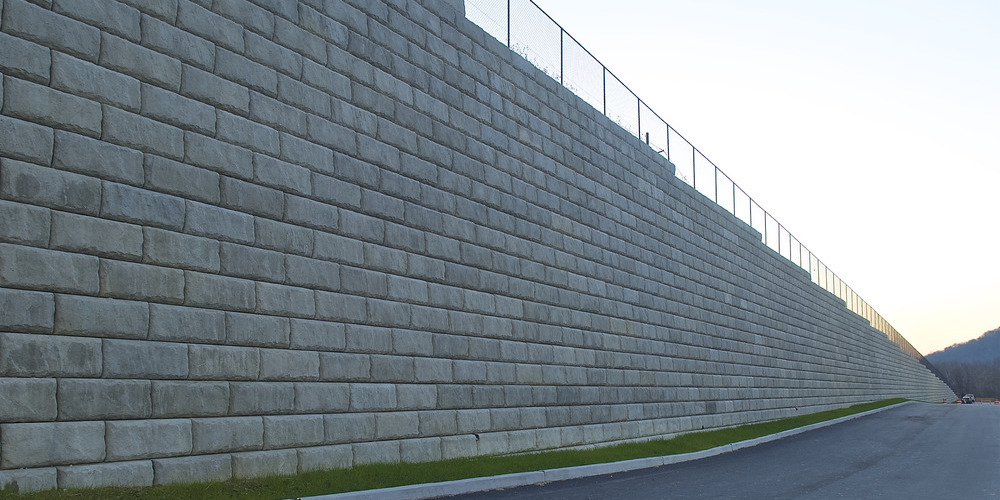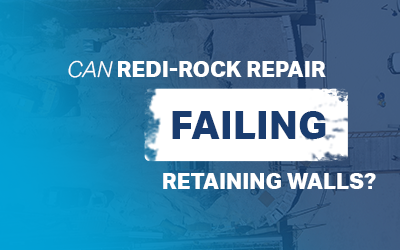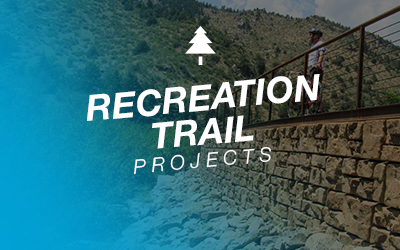Engineering FAQs: Wall Engineering and Structural Limits
Avg. Read Time: 3 mins, 4 sec
You’re the kind of engineer who asks the right questions, because you know the right answers lead to better solutions.
The Base Course
Short on time? Here are this article’s key takeaways…
- Redi-Rock retaining walls are engineered to achieve impressive heights–up to 18 ft (5.4 m) for gravity walls, 21 ft (6.4 m) with XL Hollow Core blocks, and over 60 ft (18.3 m) with Positive Connection systems, depending on soil conditions.
- Freestanding walls can be built up to 7.5 ft (2.3 m), with options for taller applications using tie downs or hybrid designs.
- Concrete leveling pads are typically required by DOTs for project specific requirements.
- Minimum embedment depth depends on the many factors such as wall height, and grade at the top and bottom of the wall.
- Access technical tools, including retaining wall design resources, software, wall sections, and manuals, to streamline your next project.
This FAQ is designed to support your expertise with quick, technically sound guidance to design retaining wall solutions that meet your site-specific challenges. Whether you're evaluating design heights or embedment requirements, these answers will help you move forward with clarity and confidence.
Redi-Rock Engineering Q & A
Q: How tall can you build a Redi-Rock wall with gravity and mechanically stabilized earth (MSE) solutions? A: With favorable soil conditions,
- The maximum design height for a gravity retaining wall constructed with standard Redi-Rock blocks is approximately 18 ft (5.4 m).
- You can build taller gravity walls using Redi-Rock XL Hollow Core blocks, reaching close to 21 ft (6.4 m).
- To reach even taller heights, you can use the Positive Connection (PC) solution to build a mechanically stabilized earth (MSE) retaining wall. Under special conditions, and with additional engineering support, Redi-Rock walls can be to designed to heights greater than 60 ft (18.3 m).
You can consult our preliminary wall height tool to input generic soil and loading conditions to estimate the height your completed wall may require.
Q: How tall can you build a Redi-Rock freestanding wall? A: Freestanding walls can be built up to 7.5 ft (2.3 m), with optional tie-down methods to achieve greater heights. Many Redi-Rock freestanding walls are used as barrier walls, and freestanding blocks can be integrated into other gravity or mechanically stabilized earth (MSE) designs to create hybrid walls.
Q: When is a concrete footing required? A: Departments of transportation (DOTs) may require a concrete leveling pad based on project specific requirements. The most common requirement for a concrete leveling pad is for retaining walls built on bedrock. Trying to get a level surface in this case, would require a concrete leveling pad, and this is a general industry requirement.
Q: How much embedment is required for a Redi-Rock retaining wall? A: While embedment depth is site-specific, the industry standard minimum for retaining walls is 6 in (152.4 mm). Additional embedment may be needed depending on factors such as wall height, and grade at the top and bottom of the wall. Proper embedment ensures stability and long-term wall performance. For more detailed guidance, refer to the NCMA Design Manual.

Retaining Wall Engineering Resources Explore Redi-Rock technical resources to simplify retaining wall engineering and empower confident design decisions.
- Preliminary Wall Sections
- Redi-Rock Wall + Wall Design Software
- SketchUp files
- Design Resource Manual
- Block Library
- Construction Details
- Specifications & Product Data Sheets
- Block & Application Test Reports
- Technical Resources for Barrier Walls
- Precast Modular Block Design Manual, Vol. 1 - Gravity Walls
- Engineering webinars and supplementary articles
Every project brings unique challenges, and you don’t have to solve them alone. Whether you’re navigating complex site conditions or refining design details, the Redi-Rock engineering team is ready to help. Contact us at engineering@redi-rock.com or (866)-222-8400, option 2. You can also explore our retaining wall technical resources to find the tools and insights you need to succeed.


